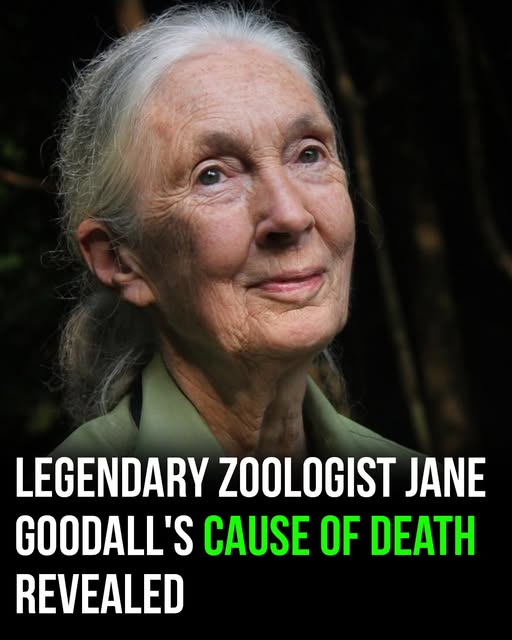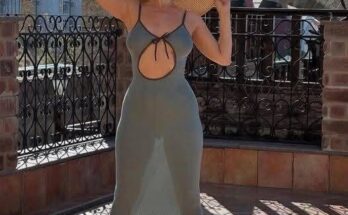
Jane Goodall, Legendary Voice for Wildlife, Dies at 91
The world has lost one of its most extraordinary champions for animals and the planet. Jane Goodall, the pioneering primatologist, ethologist, and tireless advocate for wildlife conservation, passed away on October 1, 2025, at the age of 91.
The Jane Goodall Institute confirmed that she died of natural causes while on a speaking tour in California—a fitting reflection of a life spent inspiring action for the Earth right up to her final days. Her passing has sparked a global outpouring of grief and gratitude, from fellow scientists and world leaders to environmental activists and ordinary people whose lives were touched by her words. It marks the end of an era, yet her groundbreaking legacy continues to shape humanity’s understanding of the natural world.
The Journey of a Remarkable Life
Jane Goodall’s story is the stuff of legend. In 1960, at just 26, she left her home in England to live among chimpanzees in the forests of Gombe Stream, in what is now Tanzania. At the time, it was almost unheard of for a young woman without a university degree to undertake such an ambitious scientific expedition, especially in a male-dominated field. Yet her determination, curiosity, and patience would transform our understanding of the animal kingdom.
Immersing herself in the lives of wild chimpanzees, she observed them not as subjects, but as individuals with personalities, emotions, and intelligence. Her revolutionary discovery—that chimpanzees use tools, stripping leaves from sticks to fish termites from mounds—shattered the notion that tool use was uniquely human. Her decision to name the chimps, rather than number them, allowed her to document their friendships, rivalries, tenderness, and grief, bridging the gap between humans and other animals in a profoundly humane way.
Building a Global Legacy
After earning a Ph.D. in ethology from Cambridge University—a rare feat at the time without an undergraduate degree—Goodall’s influence spread far beyond the laboratory. In 1977, she founded the Jane Goodall Institute, which has grown into a global network dedicated to conservation, research, and community-based programs promoting harmony between humans and wildlife.
In 1991, she launched Roots & Shoots, a youth program designed to empower young people to take action for animals, people, and the environment. Today, Roots & Shoots spans over 60 countries, inspiring hundreds of thousands of young activists to make a tangible difference.
A Tireless Advocate Until the End
Even in her nineties, Goodall’s energy never waned. She traveled the world speaking at conferences, universities, and public events, using the power of storytelling to inspire action. Her final days mirrored her life’s work: on a speaking tour in California, continuing to raise awareness and hope for the planet. The Jane Goodall Institute noted, “Jane never stopped believing in the possibility of change. She never stopped working to protect the natural world and to empower the next generation to build a better future.”
Tributes From Around the World
Tributes poured in from every corner of the globe. Actor and environmental activist Leonardo DiCaprio, who collaborated with Goodall as a United Nations Messenger of Peace, called her “my hero” and urged his followers to honor her memory by supporting the Jane Goodall Institute.
“Jane devoted her life to protecting our planet and giving a voice to wild animals,” DiCaprio wrote. “Her groundbreaking research in Tanzania transformed our understanding of how our closest relatives live, socialize, and think. She inspired millions to care, to act, and to hope.”
Their recent collaboration on the live-action film Howl, which tells a survival story from the perspective of a dog and a wolf, exemplified Goodall’s belief that storytelling could open hearts to empathy for animals.
Scientific and Cultural Impact
Goodall’s discoveries rewrote textbooks, expanded our understanding of intelligence and culture in animals, and blurred the lines that once separated humans from the rest of the natural world. Her research, coupled with her charismatic presence in documentaries, books, and films, brought science to millions. She authored more than 20 books and was the subject of acclaimed documentaries such as Jane (2017) and The Hope (2020), cementing her status as both a scientist and an icon of hope.
The Human Side of a Legend
Despite her fame, Goodall remained humble, candid, and warm. She spoke openly about personal challenges, including living with prosopagnosia, yet her compassion and ability to connect with others never faltered. She is survived by her son, Hugo Eric Louis van Lawick, from her marriage to Dutch wildlife photographer Hugo van Lawick, and three grandchildren, who remained a grounding force amid her global work.
A Legacy of Hope
Perhaps Jane Goodall’s most enduring gift was her optimism. While acknowledging the urgent crises facing the planet—climate change, habitat destruction, and species extinction—she always urged action fueled by hope. “Every individual matters. Every individual has a role to play. Every individual makes a difference,” she reminded generations of environmentalists.
Her passing closes a chapter on a life that transformed science, inspired activism, and awakened humanity to its responsibility to the natural world. Yet her message lives on in the work of the Jane Goodall Institute, Roots & Shoots, and countless individuals inspired by her vision.
Conclusion
Jane Goodall’s extraordinary journey—from the forests of Gombe to the lecture halls of the world—changed the way humanity views nature. Her life was a testament to curiosity, courage, and compassion. While the world mourns her loss, it also celebrates her life—a life that planted seeds of hope that will continue to grow for generations to come.


